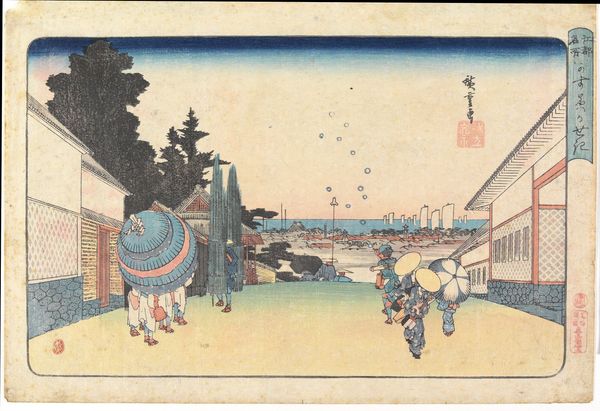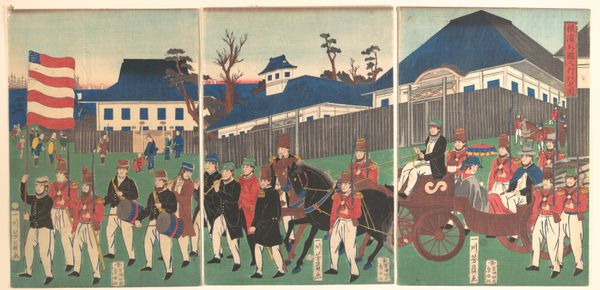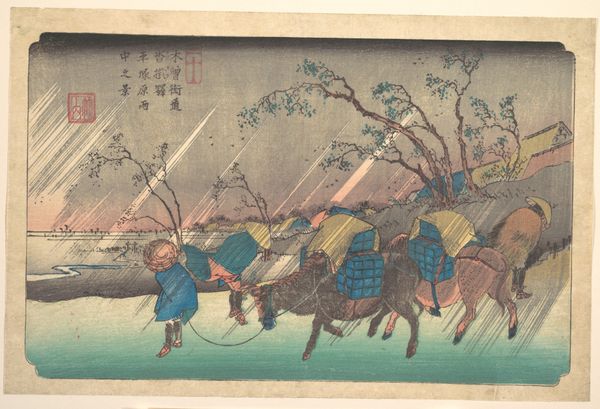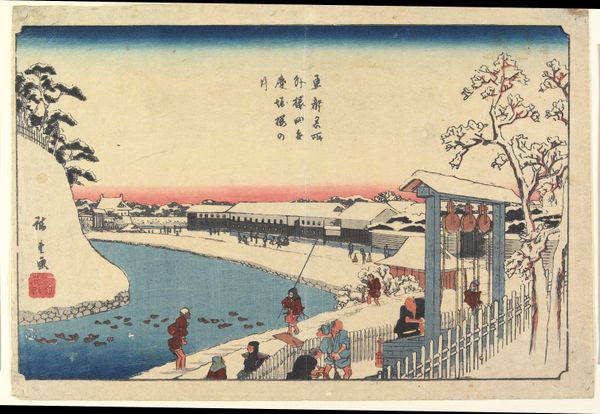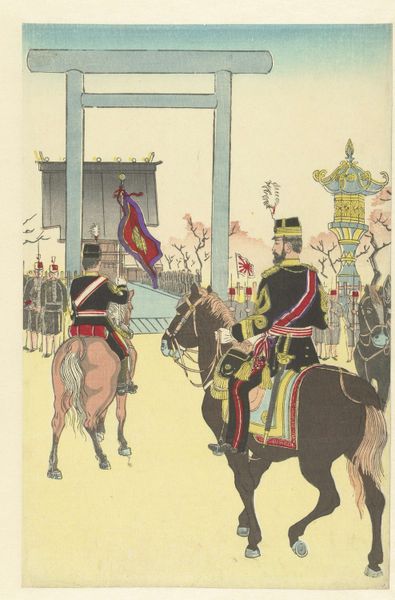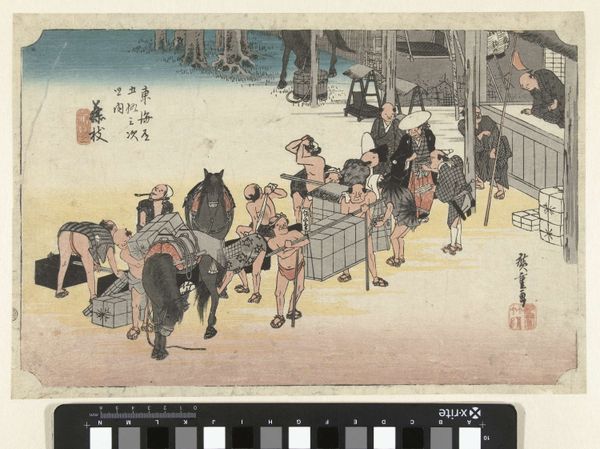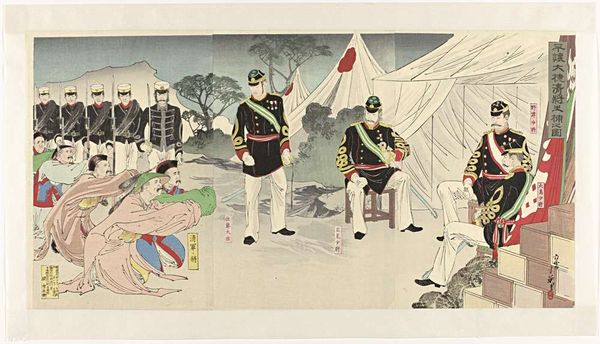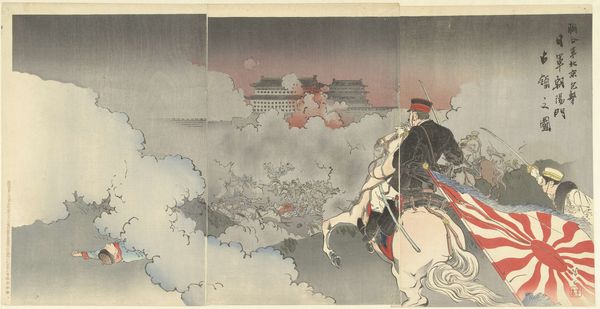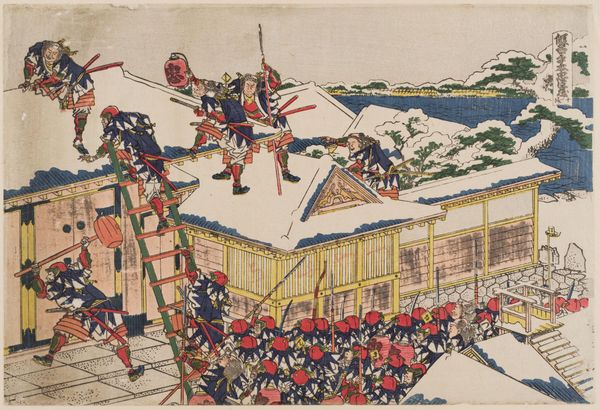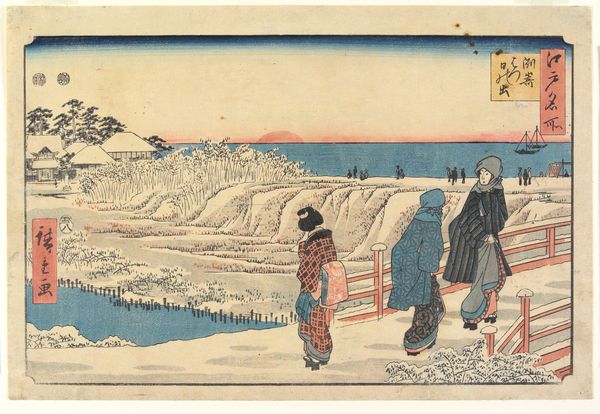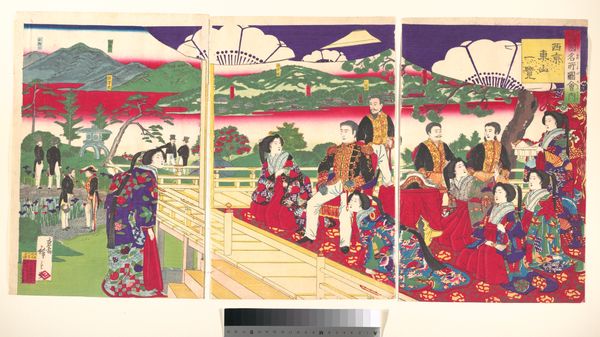
painting, watercolor
#
water colours
#
painting
#
asian-art
#
landscape
#
figuration
#
watercolor
#
coloured pencil
#
history-painting
Copyright: Rijks Museum: Open Domain
Curator: Ashihara Kuninao’s "Flowers for the Imperial Headquarters in Hiroshima," circa 1894. It is a watercolor and colored pencil work. Editor: Immediately, there’s a stilted quality—something about the way the horses are drawn. They seem...frozen, more like carved wooden figures than living beings. Curator: Absolutely, that formal quality speaks to its time. This piece depicts a very specific historical moment. It's not just a picture of horses and soldiers, it's about Imperial power at a critical time. Kuninao created it as the Emperor was actually relocating his headquarters. Editor: Which raises a few questions, right? The watercolor medium is so light, airy—yet, we’re talking about the logistical power of empire on display. Was the artist constrained in what they could show, or are we supposed to ignore all the background machinery? Curator: Perhaps a bit of both? Consider the context – it would need approval. Also consider the tradition within Asian art, there can be quite specific conventions around materials and composition. Yet, in the choice of rendering everything in what looks like small pieces or modular building blocks of pigment, Kuninao hints at something deeper. Each stroke and each little module becomes, to my mind, a brush with power itself. Editor: And it was meant for display or dissemination in what manner, do you suppose? It almost seems suited for mass production, what with those deliberate divisions of colour and line, that hint towards factory efficiency... Curator: Most likely dissemination. I'd be curious about which papers or ink Kuninao used, but ultimately, it seems to point to a broader message: a kind of visual propaganda. Power through a delicate means! Editor: Precisely! You know, seeing those ranks upon ranks of uniforms reminds me how much labor is embedded into art that looks seemingly simple. Curator: It does encourage us to think deeper about the cost involved...materially, politically, historically... Editor: And what stories it perhaps *obscures*, doesn't it? Well, a fruitful and challenging contemplation, to be sure! Curator: Indeed. Hopefully it'll help the viewer reflect not just on empire and image, but on the very idea of delicate power!
Comments
rijksmuseum about 2 years ago
⋮
The Imperial Headquarters in Hiroshima was completed in 1894 as the new facility for the modernized Japanese army. This print shows the recently built complex with the Japanese army standing in formation. The print may have been made to mark the visit of the Japanese emperor that year.
Join the conversation
Join millions of artists and users on Artera today and experience the ultimate creative platform.
